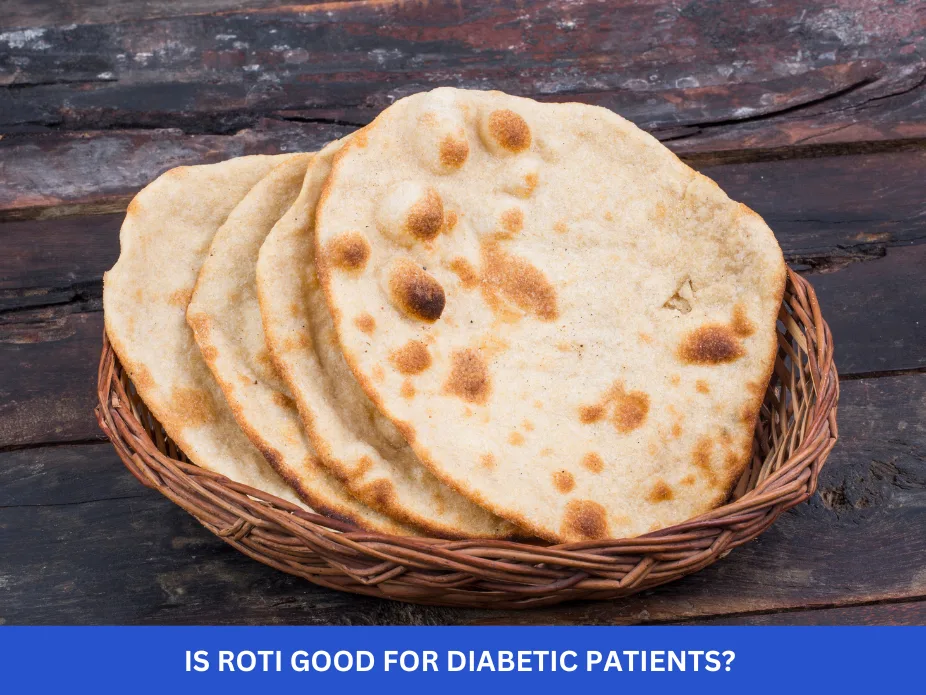Table of Contents
- Understanding Diabetic Boils and Carbuncles
- Diabetic Skin Infections: A Guide to Boils & Carbuncles
- Preventing and Treating Skin Infections in Diabetics
- Boils vs. Carbuncles: Identifying Diabetic Skin Infections
- How to Manage and Prevent Diabetic Skin Infections?
- Frequently Asked Questions
- References
Living with diabetes can present unique challenges, and one often overlooked complication involves skin health. Many people with diabetes are more susceptible to infections, particularly those that manifest as boils and carbuncles. Understanding diabetes-related skin infections: boils and carbuncles is crucial for effective management and preventing serious complications. This blog post will delve into the reasons why people with diabetes are at higher risk, explore the characteristics of these infections, and provide practical advice on prevention and treatment. Let’s unravel the connection between diabetes and these painful skin conditions to empower you with the knowledge to protect your health.
Understanding Diabetic Boils and Carbuncles
Managing diabetes effectively is crucial, not just for blood sugar control, but also for preventing complications like skin infections. In hot and humid climates prevalent across India and other tropical countries, the risk of developing boils and carbuncles—bacterial skin infections—is heightened for individuals with diabetes. This is because high blood sugar levels can weaken the immune system, making it harder to fight off infections. Proper management of blood glucose levels, ideally aiming for a balanced carbohydrate intake (e.g., around 45–60 grams per meal, though individual needs vary), is vital in mitigating this risk. Understanding carbohydrate intake is key, and you might find our article on Can Diabetics Eat Raisins? Learn About Their Impact helpful in this regard.
Identifying Diabetic Boils and Carbuncles
Diabetic boils and carbuncles often present as painful, red lumps under the skin. Boils are smaller, typically caused by a single infected hair follicle, while carbuncles are larger and more serious, involving clusters of boils. These infections can be particularly troublesome in areas with poor circulation or frequent skin trauma, such as the legs or buttocks. Prompt medical attention is crucial, as these infections can become severe if left untreated. Ignoring even seemingly minor skin lesions can lead to serious complications, especially in individuals with diabetes.
Preventing and Managing Skin Infections
Maintaining good hygiene is paramount in preventing these infections. This includes regularly washing the skin with mild soap and water, keeping the skin clean and dry, and avoiding tight-fitting clothing that can cause friction and irritation. In tropical climates, where sweating is common, maintaining good hygiene becomes even more crucial. Additionally, individuals with diabetes should monitor their blood sugar levels closely and adhere to their prescribed treatment plans. Consulting a doctor or dermatologist immediately at the first sign of a boil or carbuncle is highly recommended. Early intervention significantly improves treatment outcomes and prevents the spread of infection. Regular foot care is also essential, given the increased risk of infections in this area. Dietary choices also play a role, and you might want to read our piece on Can Diabetics Have Gravy? to learn more about managing your diet.
Seeking Help in India and Tropical Countries
If you live in India or another tropical country and are experiencing skin infections related to diabetes, it’s important to seek immediate medical attention from a qualified healthcare professional. Many hospitals and clinics across these regions offer specialized diabetic care, providing effective treatment options and guidance. Don’t delay seeking help – your health is paramount.
Diabetic Skin Infections: A Guide to Boils & Carbuncles
Diabetic individuals face a heightened risk of various skin infections, with boils and carbuncles being particularly prevalent, especially in hot and humid climates like those found in many Indian and tropical countries. This increased susceptibility stems from impaired immune function and reduced blood circulation, common complications of diabetes. Understanding these infections is crucial for preventing serious consequences.
Understanding Boils and Carbuncles
Boils (furuncles) are painful, pus-filled skin infections arising from infected hair follicles. Carbuncles, a more severe form, involve clusters of boils interconnected under the skin. In diabetics, these infections can develop anywhere on the body, but are frequently observed on areas prone to friction or sweating. The warmer climates of India and other tropical regions often exacerbate this issue. Early detection and treatment are vital, as these infections can quickly worsen, leading to larger, deeper sores and systemic infections.
Risk Factors and Prevention
Poorly controlled blood sugar levels significantly increase the risk of developing boils and carbuncles. Other contributing factors include poor hygiene, weakened immunity, and existing skin conditions. For diabetics living in tropical and subtropical climates, maintaining meticulous skin hygiene is paramount. This includes regular washing with mild soap and water, keeping the skin dry, and avoiding tight-fitting clothing that might trap moisture. Prompt attention to even minor skin abrasions is essential. Remember, nearly 15% of diabetics experience foot ulcers in their lifetime, highlighting the importance of proactive foot care to minimize the risk of infections. This risk is further compounded in hot and humid environments. For more information on maintaining healthy feet, check out our guide on Top 5 Foot Care Tips for Diabetics | Easy Steps to Healthy Feet.
Seeking Timely Medical Attention
Should you experience a boil or carbuncle, particularly if it’s large, painful, or shows no signs of improvement within a few days, seek immediate medical attention. Your doctor can provide appropriate treatment, which might include antibiotics or drainage procedures. In India and other tropical countries, access to quality healthcare is crucial for managing diabetic complications effectively. Don’t hesitate to consult a healthcare professional for any concerns regarding diabetic skin infections; early intervention can significantly reduce the risk of serious complications. It’s also important to understand the connection between diabetes and foot swelling; you can learn more by reading our article on Does Diabetes Cause Swollen Feet? Understanding the Connection.
Preventing and Treating Skin Infections in Diabetics
Diabetes significantly increases the risk of skin infections, particularly boils and carbuncles. This is especially crucial in hot and humid climates prevalent in many Indian and tropical countries. Considering that 61% of people with diabetes are aged between 20-64 years, a large, active population is vulnerable. Good hygiene practices are paramount in preventing these infections.
Maintaining Optimal Blood Sugar Levels
Controlling blood sugar levels is the cornerstone of preventing skin infections. High blood sugar weakens the immune system, making individuals more susceptible to bacterial infections like boils and carbuncles. Regular monitoring, medication adherence (as prescribed by your doctor), and a balanced diet are vital. Ignoring high blood sugar levels increases your susceptibility to complications.
Practicing Excellent Hygiene
Regularly washing your hands thoroughly with soap and water is crucial. Keeping skin clean and dry, especially in areas prone to sweating, helps prevent bacterial growth. Daily foot checks are essential, especially for those with diabetic neuropathy, to detect and address any early signs of infection promptly. Prompt attention to even minor cuts and abrasions can prevent escalation to serious infections. Additionally, wearing breathable clothing, especially in hot climates, helps prevent excessive sweating and friction.
Seeking Immediate Medical Attention
If you notice any signs of infection, such as redness, swelling, pain, or pus, seek immediate medical attention. Early diagnosis and treatment are crucial in preventing complications. Do not attempt self-treatment, as this can delay appropriate care and potentially worsen the infection. In India and other tropical countries, access to quality healthcare varies, so establishing a relationship with a trusted doctor is important. The higher prevalence of diabetes amongst the 20-64 age group (source) highlights the need for proactive care and preventative measures. Consulting a healthcare professional is critical for personalized advice and treatment plans. If you’re concerned about using antibiotics to treat an infection, you might find our article on Can Diabetics Take Antibiotics? helpful. Also, understanding your immune system’s response is vital, and you might want to read our piece on Are Type 1 Diabetics Immunocompromised? to gain further insight.
Boils vs. Carbuncles: Identifying Diabetic Skin Infections
Understanding the difference between boils and carbuncles is crucial, especially in regions like India and other tropical countries where diabetes prevalence is high. A staggering 50% of diabetes cases worldwide remain undiagnosed, according to the International Diabetes Federation, highlighting the importance of early detection and management of related complications. These skin infections, often more severe in individuals with diabetes, can significantly impact health and quality of life.
Differentiating Boils and Carbuncles
Boils, or furuncles, are painful, pus-filled bumps typically caused by a bacterial infection (often Staphylococcus aureus). They usually occur on the skin’s surface, often in areas like the face, neck, armpits, or buttocks. Carbuncles, however, are clusters of interconnected boils forming a larger, more painful area of infection. They are deeper and more extensive, often accompanied by fever and general malaise. In diabetic individuals, these infections can be more persistent and prone to recurrence due to impaired immune function and slower healing. The warm, humid climate prevalent in many Indian and tropical countries creates an ideal environment for bacterial growth, increasing the risk of both boils and carbuncles.
Recognizing the Symptoms
Early identification is key. Look for signs like redness, swelling, pain, and pus at the site of infection. Carbuncles often exhibit larger areas of inflammation and may involve multiple draining points. If you suspect a boil or carbuncle, especially if you have diabetes or live in a tropical climate, seek immediate medical attention. Delaying treatment can lead to complications, such as cellulitis (a deeper skin infection) or sepsis (a life-threatening bloodstream infection). Managing diabetes effectively is crucial, and understanding other potential complications, such as Are Cold Feet a Symptom of Diabetes?, can help individuals take proactive steps towards better health.
Taking Action
Prompt diagnosis and treatment are crucial. Your doctor may prescribe antibiotics, drain the infection, and provide guidance on wound care. Maintaining good blood sugar control through proper diet, exercise, and medication is also vital in preventing these infections. In India and other tropical regions, prioritizing hygiene and prompt medical care are essential strategies for managing diabetes and reducing the risk of potentially serious skin complications. It’s also important to be aware of other diabetes-related issues, such as Does diabetes cause hair loss, which can impact overall well-being.
How to Manage and Prevent Diabetic Skin Infections?
Diabetes significantly increases the risk of skin infections, particularly boils and carbuncles. This is partly due to impaired immune function and, in a significant portion of the population, diabetic neuropathy. According to research, 30-50% of diabetic patients experience neuropathy, leading to reduced sensation, making it easier for infections to develop unnoticed and potentially leading to more severe complications. This is especially relevant in hot and humid climates prevalent in many Indian and tropical countries, where bacterial growth is accelerated.
Recognizing the Signs
Boils and carbuncles present as painful, swollen lumps, often red and warm to the touch. In individuals with neuropathy, however, the pain may be reduced or absent, delaying diagnosis and treatment. Prompt identification is crucial, especially in tropical regions where infections can spread rapidly. Look for any area of unusual redness, swelling, or tenderness, even if you don’t feel pain.
Effective Management Strategies
Maintaining excellent blood sugar control is paramount in preventing these infections. Regular foot care is also essential, including daily washing with mild soap and water, and careful inspection for cuts or blisters. In tropical climates, consider using antifungal powders to help keep the skin dry and prevent fungal infections, which can predispose to bacterial infections. Seek immediate medical attention if you suspect a boil or carbuncle, especially if it shows signs of spreading or is accompanied by fever or increased pain. Your doctor may prescribe antibiotics or other treatments appropriate for your condition and the prevalent infections in your region.
Preventive Measures for Indian and Tropical Climates
Given the warm, humid conditions common in India and other tropical countries, proactive measures are critical. Prioritize keeping your skin clean and dry, wear breathable clothing, and avoid walking barefoot to prevent injuries. Regular check-ups with your doctor and diabetic foot care specialist are vital to early identification and management of any skin issues. Remember, prevention is key, and early intervention can significantly improve outcomes. Strengthening your immune system is also crucial; read more about Boosting Immunity While Managing Diabetes for helpful tips. Maintaining good overall health, including proper eye care, is also important. Learn more about How to Protect Your Vision with Diabetes: Essential Eye Care Tips.
Frequently Asked Questions
Q1. What are boils and carbuncles, and why are diabetics more prone to them?
Boils (furuncles) are skin infections caused by bacteria, while carbuncles are clusters of boils. People with diabetes are at higher risk because high blood sugar weakens the immune system and circulation, making them more susceptible to infections.
Q2. How can I prevent boils and carbuncles if I have diabetes?
Maintain good hygiene by regularly washing and drying your skin, avoid wearing tight clothing, and promptly treat any minor skin injuries. Strictly managing your blood sugar levels through diet and medication is also crucial.
Q3. What are the signs that I should seek immediate medical attention for a boil or carbuncle?
Seek immediate medical help if you have a boil or carbuncle, particularly in a tropical climate. Pay close attention to its size, pain level, and any signs of spreading infection (redness, swelling, warmth).
Q4. What kind of treatment can I expect for a diabetes-related boil or carbuncle?
Treatment may involve antibiotics to fight the infection or drainage of the boil or carbuncle to remove pus. Your doctor will determine the best course of action based on your condition.
Q5. Are there serious complications I should be aware of?
Yes, untreated boils and carbuncles can lead to more serious complications such as cellulitis (a deeper skin infection) or sepsis (a life-threatening bloodstream infection). Prompt medical attention is essential to prevent these complications.
References
- A Practical Guide to Integrated Type 2 Diabetes Care: https://www.hse.ie/eng/services/list/2/primarycare/east-coast-diabetes-service/management-of-type-2-diabetes/diabetes-and-pregnancy/icgp-guide-to-integrated-type-2.pdf
- What is Diabetes: https://www.medschool.lsuhsc.edu/genetics/docs/DIABETES.pdf



